the day
after infamy
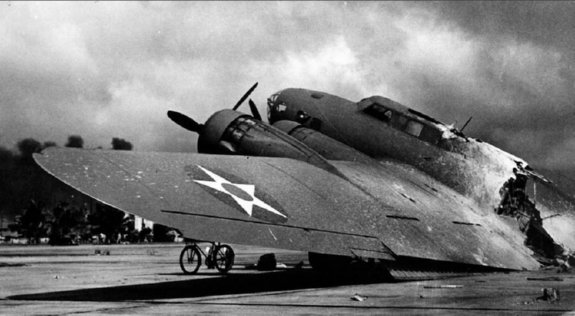
An American plane just after Pearl Harbor.
TWO-HUNDRED SEVENTY-FIVE miles north of Hawaii -- at 6:00 a.m., December 7, 1941 -- more than 350 Japanese bombers, torpedo planes and fighter aircraft launched from a Japanese strike force of six aircraft carriers heading towards the United States Pacific fleet at Pearl Harbor. At 7:15 a.m. a second wave of 171 Japanese planes took to the sky to follow up on any targets which might have escaped destruction. By 9:55 that morning the attack was over, leaving nearly 2400 Americans dead and more than 1200 others wounded. It was, said President Roosevelt in his call to Congress for a declaration of war, a "date which will live in infamy."
Ten weeks later a wave of aircraft was reported to be first headed towards and then flying over Los Angeles. A blackout was ordered followed by an anti-aircraft barrage lighting up the sky. In later years it would be labeled 'The Battle of Los Angeles' and enter UFO lore as possibly the first encounter of the modern era.
But little-known to most, something very similar -- and perhaps even more curious -- would occur over San Francisco the day after the day of infamy, December 8, 1941.

San Francisco (upper third of photo), seen from the east, circa 1940. The lower two-thirds are the Alameda Naval Station. The Bay Bridge is the nearer one, while the Golden Gate Bridge is seen in the distance.
EVENTS BEGAN around 6:00 p.m. that evening, when radar picked up enemy aircraft -- dozens of them -- at 100 miles off the coast, heading in from the sea. From the December 9, 1941 edition of the Joplin, Missouri Globe...
Planes Off California, Is Report
General William O. Ryan Says They Approached Golden Gate, but Were Sighted and Driven Back.
San Francisco, Dec. 8 (AP) -- Brigadier General William Ord Ryan, of the Fourth interceptor command, said tonight that a large number of unidentified planes approached the Golden Gate tonight, but were sighted and driven back to sea.
"They came from the sea, were turned back and the navy has sent out three vessels to find where they came from," General Ryan said.
"I don't know how many planes there were, but there were a large
number.
"They got up to the Golden Gate and then turned about and headed southwest."
Three Strange Hours
General Ryan was asked whether he thought they were Japanese bombers.
"Well, they weren't army planes, they weren't navy planes, and you can be sure they weren't civilian planes," he answered.
The general was asked if he was willing to be quoted directly.
"Certainly," he said.
The general's statement came at the end of three strange hours in which this city of 630,000 population -- 4,700 miles from Yokohama -- alternately believed it was in peril of immediate air assault, and that the blackout ordered by air raid wardens was merely practice.
Police who ordered the blackout at 6:20 p.m. announced at 7:30 p.m. that lights could be turned on again, but before many were relighted, a second blackout was decreed. The interceptor command said it had not lifted the blackout.
Guns Rushed To Water's Edge
Residents along Marina boulevard, fronting the bay near the Golden Gate, said 60 army trucks rushed anti-aircraft guns to the water's edge during the blackout.
The second warning that possible enemy aircraft were coming in from the Pacific ocean came from a spokesman at the Twelfth naval district headquarters 40 minutes after the first all-clear signal. Captain W.K. Kilpatrick, chief of staff, later disavowed the report, however. He declined to comment on whether there actually had been planes heard or sighted.
At Hamilton Field, a pursuit ship base 35 miles north of San Francisco, officials said no planes from there "have been shot down and we
haven't shot down any." They would not say whether any of their ships were in the air, however.
The "all-clear" order came from the Brigadier General William Ord Ryan's Fourth interceptor command at Riverside.
The hastily summoned air raid wardens, many of whom enrolled only today, did not recognize the alarm as a practice test.
Householders in the Ingleside district said one warden ran through his area pounding on doors with a flashlight and ordering lights turned off.
While the sirens from neighborhood fire stations spread the alarm,
huge searchlights went into action along the ocean beach, and planes that apparently were night fighters took to the air.
Reports Are Spread
Warnings were spread to the city through the police chief's office, which did not comment upon the plane report from the army.
"This information came to us from General Ryan of the interceptor division office," a spokesman at the chief's office said.
All calls to the interceptor division office were met with the operator's reply:
"Sorry. I can't give you any information."
Meantime, San Francisco radio stations went off the air.
A huge mobile anti-aircraft searchlight went into action at the San Francisco beach, its rays searching the sky.
Air raid warnings began to sound throughout the city at 6:50 p.m. as fire trucks were backed from their stalls, under a pre-arranged system, and sounded their sirens.
Lights Turned Out
Along Marina boulevard, a fashionable thoroughfare near the Presidio on the north side of San Francisco, soldiers caused householders to turn out their house lights.
Wilbur Sanders, Associated Press editor living in the Sunset district in the southwestern part of the city, said at 8:55 p.m. he heard the sound of many airplane engines.
The planes appeared to be heading seaward, Sanders said.
A few minutes after the first sirens were heard in outlying districts, others began joining in and a continuous wail filled the air.
Streetlights in the downtown area were turned off at 7 p.m. and restaurants and other business establishments blacked out.
After the first searchlight flared up at the beach, army air corps groundsmen from the Presidio brought 15 others into play. They lighted the skies along the western beach between the Golden Gate and the southern limits of the city.
The entire district south of Golden Gate park was blacked out, policemen going from house to house to get lights turned out.
And from the December 9, 1941 edition of the Sandusky, New York Register Star News...
Blackouts, Air Raid Alarms Bring Warfare Close To West Coast
BY LEICESTER WAGNER
(United Press Staff Correspondent)
SAN FRANCISCO, Dec. 9 -- A night of blackouts and air raid alarms ordered by military authorities brought the war close to the west coast today.
Army authorities asserted enemy aircraft was [sic] operating off California's shores, and before dawn two blackouts had been ordered for the San Francisco bay region while the Pacific northwest and San Diego remained in darkness night-long.
Considerable confusion surrounded the alert signals which many persons assumed to be practice alarms and which even the police twice mistakenly announced were test warnings.
The first was ordered when planes were detected about 100 miles off San Francisco. Brigadier General William Ryan, commanding the Fourth interceptor command, was convinced they were enemy craft. He said the Navy was attempting to "locate and give battle" to the invaders.
The second warning presumably was caused by U.S. Navy patrol bombers that failed to identify themselves.
"We're in a hell of a spot here and we just can't take any chances," Ryan said.
The initial "enemy" force was believed to number 60 planes which ventured to the entrance to the Golden Gate. The planes were flying too high to be caught by searchlights. They soon disappeared to sea.
The report was relayed up and down the coast. Radio stations were ordered off the air lest their signals afford direction posts. Blackouts were imposed at Army posts, Navy bases, defense plants and numerous cities.
Rioting followed in Seattle where crowds numbering almost 3,000 persons swarmed the streets and kicked in windows and broke electric signs of merchants who had failed to observe the blackout.
Los Angeles radio stations that had been restricted to broadcasting identification calls each half hour, were ordered off the air completely "until further notice."
A bright moon to some extent offset the blackout in California but the northwest was overcast and past experience in trial blackouts had given that area a chance to perfect its "alert" organization.
In San Francisco the city pulled the switches on street and bridge lights, including the big span across the Golden Gate, and Mayor Angelo Rossi's staff hastily began a telephone campaign to get commercial signs and residential lights turned off. Ferry sirens screamed the air raid warning.
For 65 minutes the alarm, originally broadcast by the police radio system, was in effect before the police announced an all clear. At no time, police said, was there panic here. Motorists, stopped by police on street corners and ordered to dim their lights, drove to nearby hills to watch for the reported enemy raiders. Police and volunteers went from door-to-door warning residents to pull their shades.
Portland, most of the Pacific northwest, San Diego, and all the province of British Columbia were blacked out. Los Angeles was not.
The blackout and air raid alarm here was bogged in confusion. Conflicting orders and statements befuddled even the police. Twice they advised that the blackout and alarm had been terminated and was only a practice alert, but both times General Ryan insisted it be continued. To answer reports that it was a test alarm he finally issued this statement:
"Planes were originally detected at a point about 100 miles offshore, approaching in the direction of San Francisco. There were two flights, comprising numerous planes.
"The planes came to within 20 miles of the Golden Gate, at which point one flight headed toward Monterey, the second turned north.
"The two flights joined near Point Reyes (about 30 miles north of San Francisco), passed low over Fort Barry (on a promontory guarding the entrance to the Golden Gate). When they had reached a point opposite the offshore entrance to Monterey bay, they turned west southwest and disappeared at sea.
"There were no Army, Navy or civilian planes in the air at the time."
(The War Department in Washington hours after the alarm said it had received no report of hostile planes off the west coast and had "no means of verifying the report.")
Ryan's statement indicated that it was patrolling naval craft that first detected the approaching planes, rather than the aircraft warning-service.
This was borne out in a statement issued by Mayor Rossi. He said he was first informed by the Navy intelligence officer at Treasure island that unidentified airplanes were approaching.
Throughout the west normal civilians, by Army order, were evacuated from a 20-block area around Fort MacArthur which protects the vital Los Angeles-Long Beach harbor.
Civilians also were evacuated from the strategic Carquinez straits, where the Sacramento river enters San Pablo bay. Along this strip lie Mare Island Navy yard, the Benicia arsenal, scores of oil refineries and targets particularly vulnerable to attack.
Instrument operation of commercial aircraft was halted because radio direction beams also were ordered off the air. Operations until the beams are restored will be possibly only in daylight and during the best weather.
But though the above United Press report gave the number of aircraft detected as 60, the Associated Press reports would give the number as 30. From the December 9, 1941 edition of the Oakland, California Tribune which gave more details...
Japanese warplanes slipped through American defenses last night and flew over the entire San Francisco Bay area, but did not fire a shot or drop a bomb.
Brigadier General William Ord Ryan of the Fourth Interceptor Command confirmed that they were enemy planes, apparently on a reconnaissance flight.
Four air raid warnings partly blacked out Oakland and San Francisco, but obviously caught the cities unprepared and unaware of what to do.
2 SQUADRONS REPORTED
General Ryan said that two squadrons of planes, apparently bombers, slipped over the coastline and then split into two groups of 15 planes each. They circled the San Jose area, and one group passed over Mare Island, at high altitude.
Army interceptor planes followed the first of the enemy squadrons, but were unable to determine where they finally went. The Navy then took up a search for a plane carrier, presumably lurking off California's coast, and possibly 500 or 600 miles at sea.
One squadron of planes streaked away to the north, the other south-west.
The Tribune report also revealed that all told there had been four alarms, with two occurring in the early-morning hours...
The first alarm, which was only a yellow, indicating that enemy planes were en route, was sounded by the Alameda County Civilian Defense Council at 6:25 p.m. The Japanese came over Northern California on that flight.
The second alarm, also a yellow, but which brought out American planes of both the army and navy, came at 8:08 p.m.
The third alarm, at 1:43 a.m., ran through the warning circuit to blue, at which radios and street lights went out, sirens sounded, and the civil population was warned to take cover.
Once more, at 4:50 a.m., the yellow alarm was sounded, and the all-clear didn't come until an hour later.
From the December 9, 1946 edition of the Huron, South Dakota Evening Huronite came the conclusion that the planes had been launched from an aircraft carrier...
Pacific Coast Area Tense As War Strikes Near Home; U.S. Digs In For Long War
Vital Defense Areas Scouted By Enemy; Coast Cities Are Blacked Out; San Francisco Is Confused
SAN FRANCISCO, Dec. 9 (AP) -- The Army and Navy were on the prowl today for an enemy aircraft carrier which army authorities said sent at least two squadrons of planes in reconnaissance flights over industrial plants ringing San Francisco Bay -- without dropping a bomb.
The 30-odd planes ranged from San Jose at the south tip of the bay to the huge naval yards at Mare Island, the fourth Army interceptor command reported.
The flight caused the first blackout in San Francisco's history. Two
other blackouts followed in the darkness of early morning, but Army authorities did not disclose whether enemy planes again approached.
Army interceptor planes followed the first of the enemy squadrons, but were unable to determine where they finally went. The Navy then took up a search for a plane carrier, presumably lurking off California's coast and possibly 500 or 600 miles at sea.
"I don't think there's any doubt the planes came from a carrier," said Lieut. General John L. DeWitt, commander of the Fourth Army and the western defense command.
San Francisco learned of the presence of enemy planes after hours of confused and conflicting reports given out during a sudden early evening air raid alarm -- first on the mainland -- and blackout lasting two and a half hours.
Afterward, while searchers still sought whereabouts of one group of 15 planes that flew southward from San Jose, 50 miles south of San Francisco, blackouts were placed in effect in almost every major west coast city.
Army sources said the enemy planes flew inland over the coast line west of San Jose about 6 p.m.(PST), then the formation split into two squadrons of 15 planes.
One squadron flew southward and vanished.
The second squadron flew northward past the San Francisco bay cities and up the bay to the vital Mare Island Navy base 25 miles from San Francisco.
After scouting the Navy yard from a great elevation, this squadron flew westward and through the Golden Gate out to sea.
Reports from the Army did not indicate any anti-aircraft fire. The enemy planes themselves did not fire a shot.
General DeWitt, talking with newsmen, said finding the carrier at sea might prove difficult.
"The carrier would have moved after they (the planes) were launched, and they would rendezvous in another spot," the general said.
And from that same edition, an analysis of why dozens of Japanese planes might have flown over the area without dropping a bomb...
See Jap Scheme To Panic U.S.
Informed Quarters Believe Nipponese Planning Early Crippling Blows
By JOHN M. HIGHTOWER
WASHINGTON, Dec. 9 (AP) -- A far-flung Japanese effort to panic the United States into withdrawing its main battle fleet to home waters appeared to be underway today as part of an almost incredibly daring plan for a swift rout of all American military and naval power in the Far East.
This was the interpretation some informed quarters placed on the bold aerial reconnaissance of the San Francisco area last night, the reports
of officials in Vancouver, B.C. that Japanese naval units were off the Aleutian Islands.
The Japanese grand strategy appears to call for immobilizing the
powerful U.S. Pacific fleet as the first major move of the war.
The first action designed to this end was the devastating raid on Pearl Harbor.
Withdrawing of the United States fleet would leave the Japanese free to act, with relatively small naval forces, against American bases strung across the Pacific from Hawaii to the Philippines. That action, in fact, has long since started against Guam, Wake, Midway and the other American outposts.
The next night there would be further odd occurrences in the skies. From the December 10, 1941 edition of the Oakland, California Tribune...
Mystery Flares Drop; Bay Area Blacked Out
Air Raid Warnings Given at 1:48, 2:04 a.m.; Army Planes Scramble Up to Search Skies
Two air-raid warnings blacked out the Bay district early today, and flares, presumably from enemy planes, were reported dropped over San Francisco and Marin County.
The Fourth Army Interceptor Command, silent as to the cause of the alerts, said no information was available concerning the flares, but added that it was unlikely that they had been dropped from U.S. planes.
There was a report also that flares in groups of 10 and 15 were dropped at sea four miles south of Fort Bragg, on the Mendocino County coast line. The sheriff there was investigating.
The first warning here, a "yellow," was flashed at 1:48 a.m., and
the white all-clear followed five minutes later.
SECOND ALERT
The second alert came at 2:04 a.m., followed 12 minutes later by the blue signal, indicating that enemy planes still were approaching, but at 3:22 a.m., the all-clear sounded.
Army planes took to the skies at the first warning, searching through the clouds over a metropolitan district that was blacked out almost perfectly. There was no report of what they saw.
Searchlights swung into action, piercing the skies with their beams, and anti-aircraft gunners were on the alert, but no shots were fired either from the ground or air.
Windows were reported broken along downtown San Francisco streets by citizens seeking to get at switches in stores where lights still burned, despite the blackout.
FLARES REPORTED
Six flares reportedly were dropped on San Francisco, and one was reported by rooftop observers to have been seen in the direction of San Rafael. It could not immediately be determined whether the bright lights were dropped from an airplane or was a breaking power line.
The blackout on today's alarms extended from Bakersfield to the Oregon border, with American planes roaring through the skies over the whole area. It was believed that this might have been another "feeler" flight of Japanese planes.
Civilian authorities, mindful that these were not practice alarms, said the blackout in most communities was much improved over Monday night's when 30 Japanese warplanes definitely flew over this area.
That same day's edition of the San Mateo, California Times added details of the military threat assessment...
SAN FRANCISCO, Dec. 10 (UP) -- Northern California was blacked out for 65 minutes early today when the army air corps' Fourth interceptor command flashed a "red" alert indicating "aircraft overhead."
The army ordered police here to broadcast a "blue" warning indicating approaching aircraft at 2:18 a.m. PST, and a few minutes later issued the "red" alarm.
Radios Closed
All California from Bakersfield to the Oregon state line was ordered blacked out. Radio stations were ordered off the air. What defense measures the command took and the full particulars of the alarm were not immediately revealed.
(A report received at McClellan Field, army air depot at Sacramento, said that "hostile aircraft" approaching the coast caused the alarm. Authorities refused to elaborate.)
The all clear was issued at 3:23 a.m.
The next night was quiet in the San Francisco area, but a three-hour blackout was ordered in Los Angeles after an unidentified aircraft was said to be over southern California. Whether the next night went quietly as well is unknown, but there are no identifiable reports indicating any blackout. Then, from the December 13, 1941 edition of the Oakland, California Tribune...
The fourth longest and most effective blackout of the war blanketed Oakland and the entire Bay region last night as air-raid alarms sounded in the area between San Jose, Napa and Sacramento.
Sirens sounded shortly after 7:35 signalizing for an almost pitch-black condition which continued until 10 p.m...
Lieut. General John L. Dewitt, commander of the Fourth Army, limiting official comment to a statement that detectors had located unidentified planes flying over the area, added the personal observation that he was "very pleased" with the blackout.
POLICE SWAMPED
In the absence of official reports police of all cities were swamped with reports and rumors, many unfounded, from conscientious citizens. Authorities were swamped not only with calls concerning mysterious flares, none of which were found, but legitimate messages concerning unwary persons who left observable lights on...
Oakland and San Francisco residents reported hearing low flying planes, but it was believed the craft they heard were US Army interceptors.
There was a rumor that flares were suspended from a balloon suspended over the Oakland foothills, and that "flack" anti-aircraft shell fragments were peppering down around Fleishhacker Zoo at the ocean beach. These and many other reports proved false.
Occasional blackouts would occur from time to time after that, but lasted only minutes -- nor were there official reports of waves of planes or citizen reports of mysterious flares over the area.
Whatever it had been in the skies over the Golden Gate, it had seemingly moved on.




Top: The front page of the December 8, 1946 edition of the Canandaigua, New York, Daily Messenger. Second: From the December 9, 1946 edition of the Syracuse, New York, Herald Journal. Third: From the December 8, 1946 edition of the Nevada State Journal. Bottom: Chart of route of the Japanese attack force prepared for General MacArthur by his General Staff. The closest the group came to Pearl Harbor was on December 8, 1941, after which it returned east towards Japan.
THE OBVIOUS AND IMMEDIATE question which springs forth is whether 30 or more Japanese planes were over San Francisco and environs the day after Pearl Harbor.
The answer: not likely.
First and foremost, the distances involved prohibited such a strike. All six of Japan's first-line aircraft carriers took part in the attack on Pearl Harbor, which is 2400 miles from San Francisco. And on December 8, 1941 the Japanese carrier force was still north of Hawaii. The airplanes they carried could by no means reach San Francisco from there -- the Nakajima B5N torpedo bombers had a maximum range of 1,075 miles; the Aichi D3A dive bombers had a maximum range of 915 miles; and the Mitsubishi A6M Zero fighters -- at a maximum range of 1,930 miles -- still came up 500 miles short of the range needed for just a one-way flight.
The other two Japanese carriers were also otherwise engaged. The Taiyo escort carrier was thousands of miles east of Oahu at Palau while the smallish Ryujo was launching its 30 planes against the Philippines, again thousands of miles east of Oahu.
The Japanese did also have submarines capable of launching aircraft. The A1 series carried a single sea plane. Of the two completed at the time the I-9 was involved in the attack on Pearl Harbor, while the I-10 was 1300 miles south of Oahu, heading east. The B1 series also carried a single sea plane. Of those completed at the time -- I-15, the I-17, the I-19, the I-21, I-23, I-25, and the I-26, -- all were involved in the attack on Pearl Harbor. And taken altogether the submarines, even if in distance of the U.S. west coast, could only launch a total of nine planes.
The logistics of Japanese action following the surprise attack on Pearl is equally dissuasive. On December 8, 1941 -- the night of the first alert -- Japanese forces were engaged in an invasion of the Philippines, landings in Malaya, attacks on Singapore, attacks on Wake Island, attacks on Hong Kong, and the occupation of Shanghai. The attacks had been highly coordinated and towards a unified purpose having nothing to do with the west coast of the United States. Why would Japan allocate an aircraft carrier so far from the coordinated action in the east Pacific?
But aside from the logistics, the events themselves speak against whatever was caught on radar being Japanese. Reconnaissance flights were generally singular, not the dozens of planes reported. And had they been bombers over the naval shipyards and petroleum facilities, what explanation can there be for failing to take advantage of such an opportunity, and deal further crippling blows to the United States' ability to retaliate?
Which leaves the question, if not Japanese, then what was flying above the San Francisco bay on those nights?
The first possible answer is nothing, it was just war nerves. From the December 8, 1946 edition of the Racine, Wisconsin Journal Times --- published before the first night's events...
San Francisco Fears Japanese Air Raid
SAN FRANCISCO, Dec. 8.(INS) -- All military and civilian defense organizations on the west coast were organized today on a wartime basis.
Possibility that the west coast with its vital harbors, arsenals, shipbuilding yards and airplane manufacturing centers might be the next target of the Japanese bombers was reflected in the speed with which defense plans were put into operations.
A contingent of anti-aircraft units, here from Camp Haan in what had been planned as practice maneuvers, were shifted from various points in the San Francisco bay area to Vallejo and Benicia to guard the Mare island navy yard and the Benicia arsenal.
And the official story given out years later certainly attributed it all to war nerves. From the Army Air Forces In World War II (U.S. Government Printing Office, 1983)...
As these and other forces took up their defensive positions, coastal communities suffered from an "invasion fever" which first showed itself with the calling of an alert in San Francisco on 8 December. In the afternoon of the 8th, rumors of an enemy carrier off the coast led to the closing of schools in Oakland. That evening, while residents of the Bay area were having dinner, radio broadcasting suddenly ceased, and this was followed by a blackout which lasted nearly three hours. In the absence of adequate preparations, sirens on police cars were used to warn the people, and self-appointed neighborhood wardens rushed from door to door to help enforce the blackout. Reports reaching Washington of an attack on San Francisco were regarded as credible, but news dispatches soon characterized the affair as a test and announced that California had "caught its breath again." The Army, however, insisted that radar stations had tracked airplanes approaching the coast from a distance 100 miles at sea. The continuity of the tracking convinced officers that the planes were hostile, and Lt. Gen. John L. DeWitt of the Western Defense Command strongly denounced those who treated the alert lightly. In the San Francisco News of 10 December he was quoted as follows: "Last night there were planes over this community. They were enemy planes! I mean Japanese planes! And they were tracked out to sea. You think it was a hoax? It is damned nonsense for sensible people to assume that the Army and Navy would practice such a hoax on San Francisco." Newspapers, impressed with these statements, carried banner headlines announcing that the "Army Warns City Danger Near." A similar message had been carried to a national audience on 8 December when Fiorello La Guardia, head of the Office of Civilian Defense, told the radio public: "I do not want to unduly alarm my fellow citizens, but I want to be realistic. The situation is serious. We must not underestimate what happened twenty-four hours ago."
Disturbing rumors of enemy threats continued to mount on 9 December. Early that morning unidentified planes were reported off southern California, and the Eleventh Naval District ordered preparations made to repulse a raid by sea or air. Later the Navy relayed to the AAF a "red hot tip" which announced that thirty-four enemy vessels were standing off the coast near Los Angeles, waiting for the fog to lift before stage [sic] an attack. Army planes were dispatched and found that the alarm had been occasioned by the presence of a group of American fishing boats. Later in the day a report told with convincing detail of a "Japanese cruiser 20,000 yards off the west tip of Catalina Island." Other witnesses insisted that a cruiser and three destroyers, flying Japanese flags, had been spotted off the coast. This of course was the period when whales were mistaken for enemy submarines, and when floating logs were bombed by inexperienced and overeager aircrews.
Such rumors and alerts were not confined to the Pacific coast. On 9 December an air raid warning, the first of the war, swept New York City and the northeast states. At noon, advices were received that hostile planes were only two hours' distance away. Fighter aircraft from Mitchel Field took the air to intercept the raiders, and radio stations left the air. Since there was no system for warning the public -- New York's air raid sirens were not installed until February 1942 -- the police took the initiative in spreading news of the alert. As a precautionary measure school children were hurriedly sent home. No general hysteria was noted, but the warning was taken for the real thing on Wall Street, where a wave of selling on the exchanges brought security quotations down hundreds of millions of dollars in the worst slump of the stock market since the collapse of France. The alarm spread to Boston, where police shifted heavy stores of guns and ammunition from storage vaults to stations throughout the city, and where industrial establishments were advised to prepare for a raid.
The many alerts of this period reflect the inexperience of both the public and the defense forces. To some critics they indicated a deliberate attempt by the Army to frighten the public in order to stimulate interest in war preparations. Before accepting this view, however, it should be noted that many of the reports of unidentified aircraft, leading to precautionary blackouts, resulted from mechanical difficulties with new radar equipment and from the understandable mistakes of inadequately trained personnel. Further, there is every evidence that Army commanders were genuinely convinced that the danger of attack, especially against the West Coast, was very real. Military men knew better than the layman how limited were the defenses against air attack. Along the Pacific coast in December 1941 there were, for example, only forty-five thoroughly modern fighter planes to defend a coast line which extended for 1,200 miles, and along which were located such important aircraft plants as those of Boeing in Seattle, Douglas and Lockheed in Los Angeles, and Consolidated in San Diego
As a careful reading of the news reports herein will reveal, the "official" story doesn't quite match up with actual events as reported. No "news dispatches" over those days had "characterized the affair as a test" and in fact virtually all reported that aircraft had definitely been above San Francisco. Many air raid wardens were newly recruited, but though it was their first official day they were not "self-appointed." The sirens of police cars (and fire trucks and ferries) were not a sign of "inadequate preparation" but part of the trial blackouts that had already taken place, as was the swift shut-down of lights on the bridges and at military bases and the silencing of radio stations. And the attempt to conflate rumor-based civil defense alerts in Los Angeles, New York and Boston with genuine radar-driven civil defense alerts is apparent in its intent, and in its logical weaknesses.
There are other distortions as well. For instance, Alameda County did order schools closed, though not because of "rumors of an enemy carrier off the coast", but rather as a precaution until the Alameda County Civilian Defense Council could prepare a civil defense plan -- the United States, after all, had just declared war that day.
But the most rankling are the assertions that there were "mechanical difficulties with new radar equipment" and "understandable mistakes of inadequately trained personnel". These statements not only go unsupported by any references or documentation, but are blatantly counterintuitive to the continuous radar detection of a formation of aircraft traveling to a point off a major city, then neatly splitting into two formations, one heading north, the other heading south.
That said, the purpose of this piece is not to suggest to answer any answers to the events of that day -- in the end, they lie only in personal belief and imagination.
Rather it is to explore why some incidents -- such as the "Battle of Los Angeles" which took place in February, 1942 -- enter the "canon" of UFO lore, while equally odd events such as the December, 1941 radar report of enemy aircraft over San Francisco go mostly unheeded. And using that as a springboard, to contemplate ufology itself.
For the day after infamy would resonate far beyond the first modern report of the arrival of still-unidentified intruders in the sky.
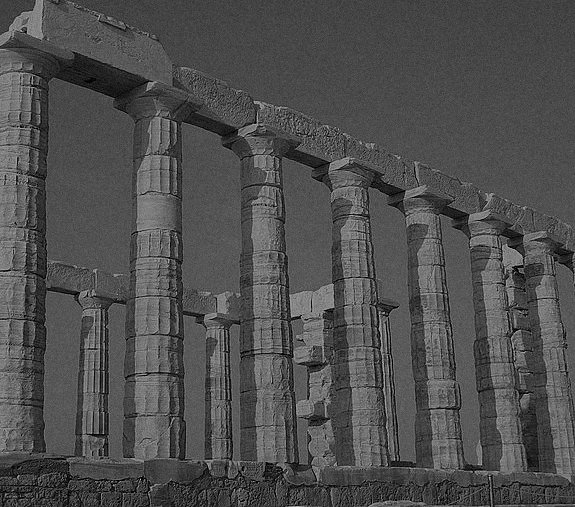
Temple of Poseidon at Cape Sounion, circa 440 BC.
ALL THROUGH recorded history -- and doubtless long before that -- the people of each successive age have interpreted the events and mysteries of life through each age's own unique understanding. In earliest Japan, the wind arose when the god Fujin let air escape from the bag he carried. In ancient Greece the god Poseidon brought forth earthquakes by thrusting his trident into the ground. For the Norse, thunder and lightning were caused by Thor striking his hammer. And for ages after that -- in some parts of the world, at least -- all the mysteries were thought to lie in the will and wisdom of a sole god who watched over all things. And thus each age's events and mysteries were interpreted and explained by the oracles, the prophets and the priests of the time according to their own understandings.
And for each age, such understanding sufficed.
But beginning in the 1800s, a new understanding began to emerge: the age of modern science. This new understanding gave rise to new disciplines: geology, archaeology, paleontology, the theory of evolution. New understandings also brought new inventions: railroads, electric power, light bulbs, telephones. And in the first half of the 20th century the influence of science only accelerated: radio, powered flight, automobiles -- to name but a few.
Then, near the mid-point of the 20th century, came the global conflagration called World War II. Entire cultures would organize around evil so unimaginable that it still shocks today. Within the space of mere years, 60 million or more would die worldwide. And in its wake it would leave generations shaken in their understanding, the effect of which was summed by an ex-GI college student in 1949:
All any church can do is give you something besides an animal reason for living in a world where just about everything else is trying to kill you by one means or another. As the human race plunges forward in time to where it's going the size of that reason changes. If there's any trouble with religion today it's that they haven't enlarged the reason to keep up with the size of the question.
For many, the answers were to be found in modern science. From another ex-GI college student in 1949:
When I'm at school and things seem pretty routine I forget what we're doing and where we're going. And then I'll think of the gene studies that probably will change the human race more in the next few generations than let's say selective breeding has done to milk cattle in the last 500 years, or of the electronics boys at M.I.T. and their servomotor robots -- intelligent, faithful, accurate and untiring -- or the computer men at the Moore School with their machines that will solve a problem involving several hundred thousand separate and simultaneous calculations in a few hours, or the guided missile and upper-atmosphere men at Guggenheim Lab here who already live in a world of 10 miles per second speeds and man-made satellites, or the biochemists at Chicago to whom life is a series of electronic and molecular relationships that are becoming more obviously understandable by the minute.
What the very astute student was describing was the result of perhaps the most radical change engendered by a world at war: the merging of science and the state. For the day after infamy brought with it massive infusions of government resources into scientific research and development.
And the result of the merging of science and the state was to ultimately give this age its new class of oracles, prophets and priests to interpret and explain life's events and mysteries: the scientists. Any argument could be seemingly settled by what a group of people or even a single person had to say about the matter, as long as those people were called "scientists".
But scientists are also human, and therefore prone to hubris. In 1895, while teaching at Harvard, philosopher-scientist-educator William James would point out...
There is included in human nature an ingrained naturalism and materialism of mind which can only admit facts that are actually tangible. Of this sort of mind the entity called "Science" is the idol. Fondness for the word "scientist" is one of the notes by which you may know its votaries; and its short way of killing any opinion that it disbelieves in is to call it "unscientific."
It must be granted that there is no slight excuse for this. Science has made such glorious leaps in the last 300 years . . . that it is no wonder if the worshipers of Science lose their heads. In this very University, accordingly, I have heard more than one teacher say that all the fundamental conceptions of truth have already been found by Science; and that the future has only the details of the picture to fill in. But the slightest reflection on the real conditions will suffice to show how barbaric such notions are. They show such a lack of scientific imagination that it is hard to see how one who is actively advancing any part of Science can make a statement so crude.
Think how many absolutely new scientific conceptions have arisen in our generation, how many new problems have been formulated that were never thought of before, and then cast an eye upon the brevity of Science's career. Is this credible that such a mushroom knowledge, such a growth overnight as this, can represent more than the minutest glimpse of what the universe will really prove to be when adequately understood? No! Our Science is but a drop, our ignorance a sea. Whatever else be certain, this at least is certain: that the world of our present natural knowledge is enveloped in a larger world of some sort, of whose residual properties we at present can frame no positive idea.
The succeeding decades would prove James right, introducing the theories of relativity, quantum mechanics, multiple dimensions, parallel universes, a holographic universe and a multiverse -- all expounded by "scientists" and therefore treated as reputable ideas.
But what of those ideas that a "scientist" may label as unreputable? Again, William James...
"The great field for new discoveries," said a scientific friend to me the other day, "is always the unclassified residuum." Round about the accredited and orderly facts of every science there ever floats a sort of dust-cloud of exceptional observations, of occurrences minute and irregular and seldom met with, which it always proves more easy to ignore than to attend to. The ideal of every science is that of a closed and completed system of truth. The charm of most sciences to their more passive disciples consists in their appearing, in fact, to wear just this ideal form. Each one of our various "ologies" seems to offer a definite head of classification for every possible phenomenon of the sort which it professes to cover; and so far from free is most men's fancy, that, when a consistent and organized scheme of this sort has once been comprehended and assimilated, a different scheme is unimaginable. No alternative, whether to whole or parts, can any longer be conceived as possible. Phenomena unclassifiable within the system are therefore paradoxical absurdities, and must be held untrue. When, moreover, as so often happens, the reports of them are vague and indirect; when they come as mere marvels and oddities rather than as things of serious moment, one neglects or denies them with the best of scientific consciences. Only the born geniuses let themselves be worried and fascinated by these outstanding exceptions, and get no peace till they are brought within the fold. Your Galileos, Galvanis, Fresnels, Purkinjes, and Darwins are always getting confounded and troubled by insignificant things. Any one will renovate his science who will steadily look after the irregular phenomena. And when the science is renewed, its new formulas often have more of the voice of the exceptions in them than of what were supposed to be the rules.
All of which was summed succinctly by philosopher and scientist Herbert Spencer, a contemporary of James:
There is no bar to knowledge greater than contempt prior to examination.
This dynamic is pointedly relevant in the modern phenomenon known variously as flying saucers, flying discs, or UFOs. At the beginning of the phenomenon the military looked according to its own understanding and saw a potential military threat. At the same time "scientists" by and large didn't even bother to look -- proclaiming it to be a combination of hallucination, illusion and hysteria without any attempt at research.
A news report from the July 2, 1947 edition of the Pittsburgh Post-Gazette is illustrative, giving "science's" opinion just one week after the first report of strange things seen in the sky, followed by a nationwide series of sightings reports...
Those Flying Saucers Just Aren't Believed
Phenomena Reported In Washington Due To Crackpots, Savants Here Told
Maybe they don't make the stuff that strong in Pennsylvania. At any rate, no one here has seen the famous "flying saucers," supposedly meteors, which have been reported in the state of Washington.
"We've had a lot of crack-pot reports in our day," said Dr. Nicholas Wagman, director of Alleghany Observatory, "but as yet no one has called in about seeing flying saucers. It is possible, however, that a meteor could be oval shaped and possibly appear to be sailing through the air in a horizontal instead of a vertical position."
In Dr. Wagman's opinion, and Arthur L. Draper, head of Buhl Planetarium, concurred, the "saucers," which originated in Washington on the Pacific coast and have been reported all the way from Canada to Texas, were dreamed up by a hapless male involved in domestic difficulties and perhaps with one or two drinks under his belt.
"From our experience," said Mr. Draper, "we have found that one person can claim to have seen a phenomenon and countless other people will immediately 'see' it also. It is the power of suggestion."
Dr. Wagman advanced the theory that perhaps the "saucers" were guided missiles shot into the air by scientists employed by the Government.
"In this day and age you can't tell what you might see in the sky," declared Dr. Wagman. "I've been married 19 years and as yet I have not seen a single saucer fly through the air, astronomical or otherwise. But," he added warily, "one never knows, does one?"
The opinions of the of the likes of Drs. Wagman and Draper would mirror the approach "science" would take to the phenomenon in the coming decades: ridicule, accompanied by the casual assertion of possible causes lacking any detailed examination of what had actually occurred. More pointedly, the assertions were almost always offered as conclusions, though no tests were to take place to validate them.
But the phenomenon of flying discs and tubes and lights would endure long beyond the snide dismissal of the likes of Drs. Wagman and Draper. And for the next 22 years, at least, be extensively documented by the both the military and the press -- and even by the occasional scientist, the most famous being Dr. J. Allen Hynek.
But what then of the "true believers", and the role that they played? Regretfully, if study of the phenomenon suffered from neglect from science, it found its opposite in the too-ready conclusions of a great number of people that the phenomenon must represent nothing else but the arrival of extraterrestrials zipping above the planet.
Doubtless, part of this came from the insecurity of living in a world where the threat of instant mass annihilation was constant -- another outgrowth of the day after infamy. For the end of the war brought no true peace, only continual preparation for a war unimaginably more horrific than anything which came before, with science leading the way. The potential arrival of scientifically-futuristic beings who were literally above the fray seemed to many to carry with it the possibility of rescue from the self-destructive foibles and follies of humankind. And for those who believed, such belief also became its own "closed and completed system of truth."
Meanwhile, somewhere outside of the scorn of the scientists and the accolades of the true believers was the human experience of the phenomenon itself.
And in the end, what that experience was -- for this site in main will explore no further than the end of Project Blue Book in 1969 -- can only be examined in its totality through the story of the men, women and even children who were caught up in each individual event, taken in context. That story includes those who reported extraordinary things, yes, but also those who investigated, as well as those who scoffed and those who evangelized. Each individual had a part to play, without examination of which there can never be a fuller understanding of the phenomenon as it existed for those few decades.
And it is on that human experience and the context in which it occurred that the weekly entries on this site focus. Sometimes those human experiences will include entries from the "canon" of ufology, but just as often they will lay in the realm of "exceptional observations, of occurrences minute and irregular and seldom met with, which it always proves more easy to ignore than to attend to."
Ufology up to the present has by and large developed its "canon" with an eye to supporting a certain agenda. And thus 'The Battle of Los Angeles' is canonized while what might be called 'The Battle of San Francisco' lies fallow from neglect. But the phenomenon is comprised of a huge range of human experiences -- from the trivial to the truly wondrous -- that must be taken together before even attempting to understand the phenomenon in its entirety. The events over San Francisco may be a piece of the puzzle... or they may not. But included here they will be -- along with equally vague occurrences -- until a better picture emerges.
For the purpose of this site is not to propose definitive answers, but to seek out the questions which still remain, clear eyed and free of preconception.
Again, William James...
When from our present advanced standpoint we look back upon the past stages of human thought, whether it be scientific thought or theological thought, we are amazed that a universe which appears to us of so vast and mysterious a complication should ever have seemed to any one so little and plain a thing. Whether it be Descartes's world or Newton's, whether it be that of the materialists of the last century or that of the Bridgewater treatises of our own, it always looks the same to us -- incredibly perspectiveless and short. Even Lyell's, Faraday's, Mill's, and Darwin's consciousness of their respective subjects are already beginning to put on an infantile and innocent look. Is it then likely that the science of our own day will escape the common doom; that the minds of its votaries will never look old-fashioned to the grandchildren of the latter? It would be folly to suppose so. Yet if we are to judge by the analogy of the past, when our science once becomes old-fashioned, it will be more for its omissions of fact, for its ignorance of whole ranges and orders of complexity in the phenomena to be explained, than for any fatal lack in its spirit and principles.
And the above applies equally to ufology as well as to science -- as far as this site is concerned.
And so it may remain, until the understandings of this current age -- the age of the day after infamy -- no longer suffice, and people once again wonder how "so vast and mysterious a complication should ever have seemed to any one so little and plain a thing."
Notes:
1. None of this is meant to disparage believers in E.T. Of all the possible answers to the mystery, it is one possible outcome.
2. The quotes from the 1949 college students come from Intercollegiate Bull Session, a
March 1949 Life Magazine article on viewpoints and attitudes of modern college students, to be found in the Saturday Night Uforia library under General Interest Articles for 1949.
|
|














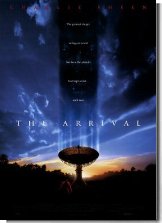
Whether you need some serious styling for your walls at home or work or are on the lookout to give someone a special gift they'll treasure forever, you support the work of Saturday Night Uforia whenever you shop for great posters from AllPosters.com from any link at this site -- any, each, and every time you start your shopping from here. You still get the same great deal as your friends and family, but a little will be sent back our way as a thank you from AllPosters.com. And you'll have the extra satisfaction of directly supporting the work of Saturday Night Uforia while treating yourself or friends to something special... like any of these great sci-fi movie posters (you can even have them mounted, laminated, or framed). Just click on the pic for a larger version...
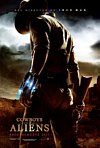






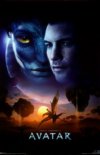

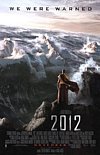
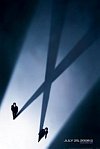
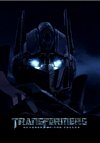

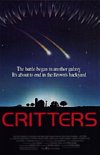
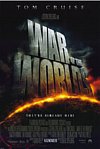


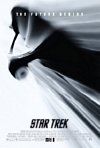



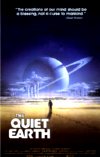

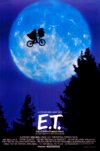
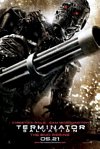

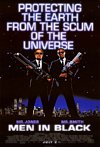
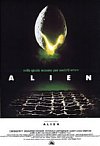






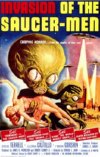
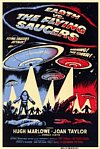





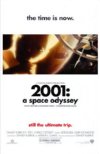
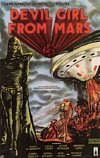

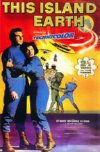
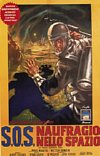

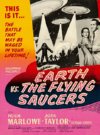

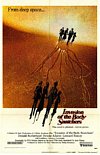
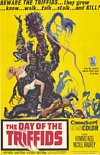
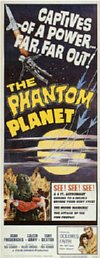

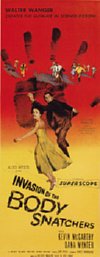



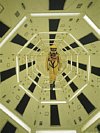



|




